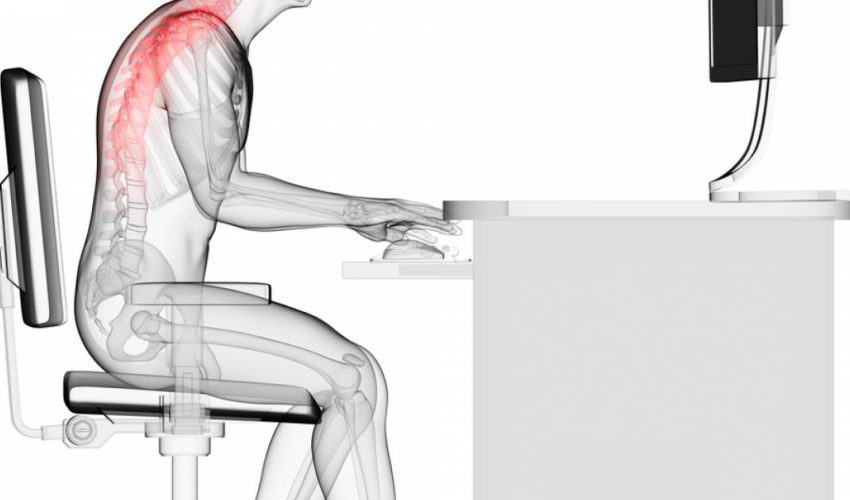Most of us would agree that sitting couldn’t possibly be good for us. However, few of us ever really came to the harsh realization of just how dangerous it is. Articles discussing this topic have been all over recently, most of which have deemed sitting the new smoking, so I thought I’d shed some light on the reasons it’s so bad and what we can do to curb some of the negative effects.
Let’s begin by taking a look at how sitting, particularly slouching, for extended periods of time affect the spine and shoulders.
To better understand the dangers on your musculoskeletal system, you must first have a basic understanding of how the human body is designed. Humans are comprised of joints that alternate between stability (primarily hinging) and mobility (multi-planar).
Starting from the ground up, we should all have mobile ankles, stable knees, mobile hips, stable lumbar spine and pelvis, mobile thoracic spine (mid back), scapular stability, mobile gleno-humeral joints (shoulders), stable elbows, and finally mobile wrists. Anything that discourages this alternating pattern, will undoubtedly lead to problems. As you will clearly see, prolonged sitting leads to a reversal of this normal alternating pattern.
Very simply, sitting leads to tight ankles, tight hips, stiff thoracic spine, and rounded/stiff shoulders. As our bodies adapt to these new limitations, other areas (such as your lower back and scapula) can begin to move excessively to make up for the lack of mobility.
Not all sitting is created equal, at least for your spine and shoulders. While keeping an upright torso, with your shoulders back is much better than slouching, I’m sorry to report that there really is no good way to sit for your hips.
When sitting, your hip flexors are in a shortened position. As time goes on, your body will adapt to this new shortened position. Your new, shortened hip flexors can lead to reciprocal inhibition. This is simply a fancy way of saying that the group of muscles opposite of the shortened muscle will have a hard time firing, leading to weakness.
In this example, short hip flexors lead to ineffective/weak glutes. This tendency towards inhibition/weakness is exacerbated by the limited blood flow we get to our butt while seated. This combination of tight hip flexors and limited blood wreaks havoc on our hip mobility and lumbopelvic stability.
If the above hasn’t scared you out of your chair, the following might. It is said that up to 66 percent of people that have no reports of lower back pain will still have lumbar disc abnormalities on MRI. In strong contrast, there is almost no prevalence of low back or hip degeneration in those in the third world. The main difference between societies? We sit, they squat.
However, squatting at your desk might garner some unwanted attention and confused stares from your coworkers. So what’s a sedentary desk jockey to do? After getting flooded with article after article warning the public that sitting can not only lead to musculoskeletal issues, but it can actually prematurely send you six feet under, many people did what seemed logical: they stood up. While standing desks can help alleviate a few of the issues associated with prolonged sitting, they in no way solve the problem. In fact, standing desks can cause more problems, but that’s an issue I will be discussing in detail in a later issue.
Not to fret, there are easy things that can be done to negate the effects of sitting. These simple exercises and stretches can be used for those of us who are stuck at a desk most of the day. The experts estimate that the average person spends about half of their waking hours sitting. The least you can do is incorporate a few minutes a day to save yourself a whole lot of trouble later.

